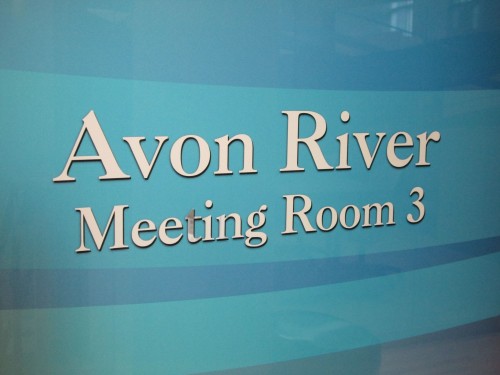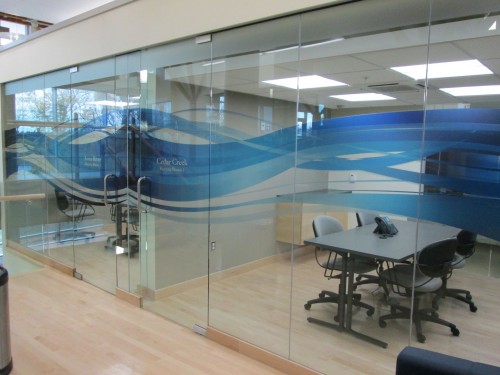By Peter Yates and Colin Chalmers
In 2012, the Upper Thames River Conservation Authority (UTRCA) in London, Ont., moved into new offices in an open-concept, Leadership in Energy and Environmental Design (LEED) certified building. While this building’s huge expanses of interior glass were an attractive part of its open concept, however, it meant all of the office partitions were wide open, without any privacy for their tenants.
UTRCA staff’s need for privacy created an opportunity to use the glass as a canvas for digitally printed images on optically clear films. In terms of interior décor, this was a chance to further beautify and personalize the office space. And it was a chance for local firm Window Film Systems (WFS) to showcase the possibilities of the relatively new and growing medium of printable clear films.
Mission: conservation
UTRCA and its counterparts across Ontario were formed after the provincial government passed the Conservation Authorities Act in 1946, with a mandate “to establish and undertake, in the area in which it has jurisdiction, a program designed to further the conservation, restoration, development and management of natural resources other than gas, oil, coal and minerals.” This initiative was undertaken in response to extensive soil loss and flooding in rural areas across the province due to earlier droughts and deforestation.

In addition to providing privacy and improving esthetics, the window graphics serve as wayfinding tools, displaying the names of their corresponding rooms.
Since then, watershed-based resource management has guided the conservation authorities’ ongoing planning and operations. UTRCA, as its name suggests, covers the upper watershed of the Thames River, an area of 3,482 km2 (1,344 sq mi) that is primarily rural, but also includes urban centres like London, Stratford and Woodstock, Ont., with a population of approximately 485,000.
The 17 municipalities within this heritage-designated watershed appoint representatives to UTRCA’s board of directors, who must then decide upon policies and programs to conserve the Thames. UTRCA also employs more than 72 full-time and contract employees and between 100 and 150 seasonal employees. Its services include flood control, environmental planning and monitoring, soil conservation, drinking water source protection, watershed planning and research.
Combining past and present
Discussion of the glass films project began when UTRCA reached out to WFS with an inquiry through the company’s website. At first, there was talk of using frosted-glass films, but the designer at UTRCA, Ryan McNaughton, soon realized he could accomplish much more esthetically by having custom images printed instead.
WFS got the go-ahead and worked with the design team to conceptualize all of the graphics that would be printed onto the clear films. This involved back-and-forth discussions and on-site visits to get a better sense of the space.
As the project developed, for example, one area of focus was UTRCA’s long history. Black-and-white photos taken as far back as the 1920s and ‘30s, depicting the region before the Conservation Authorities Act was passed, were incorporated into collages to cover the windows of two new meeting rooms.
In other spaces, on the other hand, it was more imperative to continue letting light through the glass, even while adding artwork to enhance privacy. To achieve the right balance between these needs, UTRCA designed more modern ‘fluid’ graphics, representing the flow of water as a theme, which would only obscure limited sections of the glass surfaces and would match the esthetics of the surrounding décor.
The films served other purposes beyond privacy and esthetics. For one thing, in terms of safety, they would help make people walking through the building aware of all glass barriers. For another, they would serve as wayfinding tools, displaying the names of their corresponding rooms.






